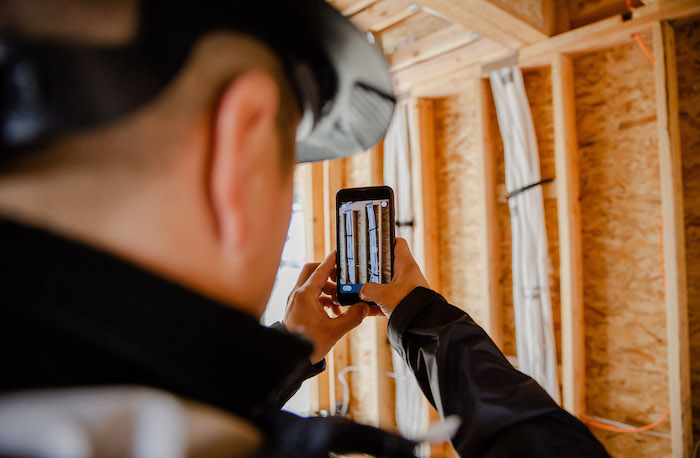Using Technology to Appeal to Young Talent

March 28, 2022
When young people think of construction, they typically don’t think of a tech-savvy industry that’s full of digital tools and processes. As a more than 7,000 year-old industry, construction is notoriously known as being slow to adapt and try out new technologies. Paper and pen was historically used as the tried-and-true method for nearly every workflow—from daily reporting to time cards and beyond.
However, when faced with a global pandemic, companies were forced to quickly find new ways to innovate and go virtual to accommodate for less physical touchpoints and increased distancing requirements. While this has been somewhat of a challenge overall, the companies that have been able to successfully pivot and adapt to more technology conveniently find themselves with an additional new advantage—appealing to the next generation of employees.
Staying Ahead of the Curve to Entice New Talent
It’s no secret we’re in the digital age. And with so many options for young graduates and people looking to enter the workforce, construction is now directly competing with tech offices offering perks like cold brew on tap and nap pods. In order to successfully maintain a strong pool of candidates, companies need to start looking at how well their company embraces technology to appeal to this younger incoming class. It’s rare to find someone from the new generation who isn’t tied to a digital device in one way or another, so integrating tech within a company’s processes is crucial to making sure they don’t miss out on quality candidates.
This doesn’t mean a company has to rush and buy all the tools they can find to look like they’re technologically advanced—but they should start considering and planning which processes could use a lift into the 21st century.
Moving Away from Manual Processes
Especially with the ongoing global pandemic, pen and paper will no longer cut it as a company’s main source of communication and documentation. Aside from the fact that it’s time-consuming and tedious to manually fill out paperwork then transcribe it onto a computer later, it also increases a company’s risk of losing or missing crucial project information. By finding the tools that eliminate double entry and save workers time, they’ll have more flexibility to focus on the parts of the job that matter most. Technology can help remove the friction and monotonous tasks that sometimes plague the workplace, leaving a company with better organized data and reports with less effort.
Building a Construction Tech Stack
Many companies fall into the trap of thinking an all-in-one solution will solve all their problems by purchasing just one tool at one price. While these solutions will certainly help bring most workflows into the present-day, companies run the risk of implementing something that’s average at everything, and master of none. Plus, a complex tool that’s difficult to use because it’s so robust might end up getting ditched for whatever was easier and seen as the path of least resistance by the end user.
If a tool doesn’t gain traction or high user adoption, the investment is essentially useless for the business. By taking a page from the tech industry, a company can increase their end-user adoption by supplementing all-in-one tools with multiple best-in-breed solutions that integrate seamlessly. This results in a more efficient stack of technology that offers the best of both worlds—easy-to-use features that talk to each other and streamline operations across nearly every workflow.
Offering Digital Trainings
The final piece to making sure a company is technologically ready for the next generation of employees is looking at moving apprenticeship classes online. With the continued limitations on in-person offerings, this adaption is crucial to filling the funnel of apprentices and potential future employees. Within a week of COVID-19 shutdowns, I saw many contractors quickly pivot to online classes.
When you need to survive, you start changing the way you operate. In the real world, if you don’t have a kick and a push like the COVID pandemic, the urgency isn’t there. Construction is capable of leveraging technology, but we just need a jump start—and I think COVID has been a really great jump start.
At the end of the day, technology isn’t going anywhere. The faster companies can adopt digital tools and integrate them from every angle, the faster they’ll start to see more efficiency and returns on investment as new, younger workers begin to explore their options.
—By Brian Poage, Senior Construction Support Manager at Raken Construction. His previous experience includes superintendent at Turner Construction and construction project manager at WeWork.
More News
April 19, 2024 | Business
How K&B Brands Handle Product Quality Control
April 19, 2024 | Business
Artistic Tile Paramus Unveils New Location
April 18, 2024 | Business, People
Excelling at Kitchen Design When You Don’t Like to Cook
April 18, 2024 | Awards & Events
KCMA Design Awards Announces Winners
April 17, 2024 | People
WAC Lighting Promotes Becky Li to President
April 2, 2024 | Sponsored
Whirlpool Corp. Brings Purposeful Innovation Home